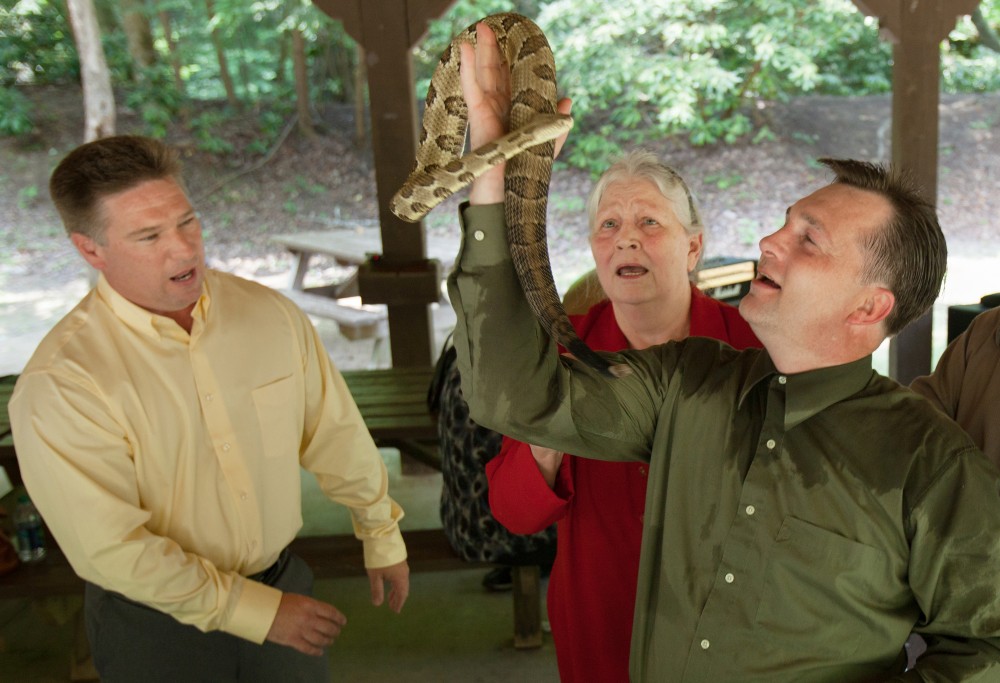
The professor was ill, so I’d been asked to teach the class on Pentecostalism with only a few days’ notice. I skimmed the assigned textbook, consulted a few scholarly articles, located a brief video of Appalachian Pentecostals handling poisonous snakes and drinking strychnine, and did some exegetical research on Mark 16:18: "They shall take up serpents; and if they drink any deadly thing, it shall not hurt them; they shall lay hands on the sick; and they shall recover."
Watching the video, most of the students were flabbergasted by the idea that anyone would take a few Bible verses so literally as to put their lives in danger each week during worship. Truthfully, so was I. I later wondered if it had been wrong to show the video, which seemed only to exoticize a group of believers whose faith was drastically different from that of the students.
Years later, I read Dennis Covington’s Salvation on Sand Mountain: Snake Handling and Redemption in Southern Appalachia. A finalist for the 1985 National Book Award, the book documents the culture and worship life of Appalachian snake handlers. What begins as a newspaper assignment—covering the trial of a pastor accused of attempting to murder his wife with rattlesnakes—turns into full immersion for Covington. By the end of the book, the New York Times reporter finds himself handling snakes:




